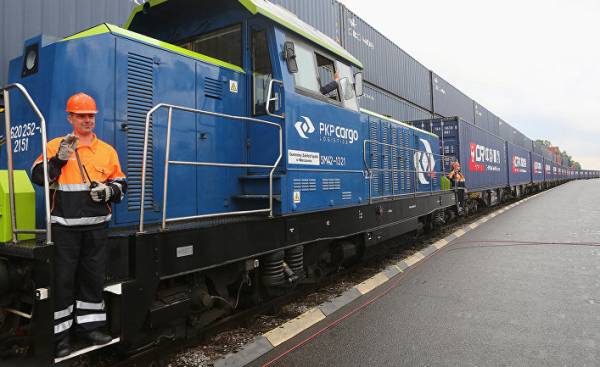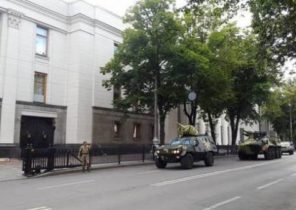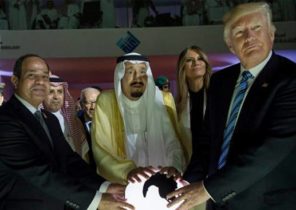
The history of Central Asia, many associated with two things — that the region was the scene of the collision of the great powers in the nineteenth century, known as the “Big game”, and before that he spent two thousand years was a Central part of a major trade route that connected China with Europe and known as the “silk road”.
But the modern understanding of the “Great game” and the “silk road” is incorrect. These terms have become the bottoms, which are sometimes used in absurd ways. For example, in the beginning of this year in Astana is in front of the University where I teach — has opened a Mega Silk road, the largest shopping center in Central Asia. In the centre there are many restaurants and designer boutiques. There are aquariums with the inhabitants of the tropical seas, and even a Dolphinarium. But is this center about a thousand miles to the North of the hypothetical route the “silk road”. In General, once this historical term has turned into a widespread brand.
Although sometimes clichés are useful in helping you quickly understand some phenomenon or simplifying a complex concept to grasp for the uninitiated, clichés about the “Great game” and the “silk road” are much less innocent.
These two terms appear today in countless books and articles about the region, and are often used to explain contemporary events. Competition between Russia, China and the US for control of Central Asia called the “New Great game”, by analogy with the confrontation between Britain and Russia in the region in the nineteenth century. The Chinese initiative of “One belt, one road” is also positioned as the successor of the ancient “silk road”. But all the anachronisms that only confuse and not explain what is happening in contemporary politics.
It is noteworthy that the “Big game” and “silk way” are phrases of European origin that emerged in the nineteenth century. These phrases have no deep roots in the language or the culture of the peoples of Central Asia. “The great game” was first mentioned in 1840 in a personal letter to Arthur Conolly, captain Bengal army of the British East India company, in the context of introducing Central Asia to European civilization and Christianity. Conolly in 1842, was executed by the Bukharan Emir Nasrullah, but the phrase has survived his first publicly appeared in the book published in 1851, the book of sir John Kaye’s “History of the war in Afghanistan,” and was later popularized published in 1901, a product of Kipling’s “Kim”. She became associated with adventure and reckless courage in the service of Empire (Russian or British) in Central Asia and also with the confrontation between these two powers in the region.
But every use of the term “Great game” in the description of interstate relations in Central Asia is wrong — it was wrong in the nineteenth century, and remains wrong now. This phrase implies the existence of clear rules for all parties, as well as a clear strategic and economic objectives, and a mixture of opportunism and cold calculation to achieve these goals. It is also assumed that the game could, or can now participate in only of the great powers and Central Asia is just a huge chess Board. The Central Asian rulers, States and Nations also play the role of extras, colourful background for the action of the great powers.
But it’s never true, even at the peak of European colonialism in the nineteenth century. When the troops of the Russian Empire moved deeper into Central Asia, the British might have thought that the Russian side is driven by the desire to encroach on British possessions in India. Meanwhile, the Russians are much more worried about their relations with the Central Asian States and peoples.
None of the parties could not operate freely in the region: both are faced with considerable logistical problems (for example, the movement of the armies was made at the expense of camels, provided by the local nomadic population) and, at least at first, had only very limited knowledge about society, culture and politics in the region.
In 1841 and 1879 the British suffered two disastrous defeats in Afghanistan, and in none of these cases, they could not explain the Russian intervention. These lesions inflicted on them by the Afghans themselves. The Emir Abdur-Rahman (1881-1901), the ruthless Creator of the modern Afghan state, used British subsidies and arms supplies to suppress internal resistance, but in return the British got very little. As shown in his research Alexander Cooley, a similar dynamics takes place: five independent post-Soviet States cannot compete with Russia, China or the United States from the point of view of economic or military power, but nevertheless they make big power play at the “local rules” — rules that are determined by local specifics, including the internal politics of the countries of the region and the character of Central Asian society.
“The silk road”, at first glance, it might seem less complicated. It refers to the complex centuries-long commercial and cultural relations between Central Asia and rest of the world. However, the term also has European origins, and with his help we try retrospectively to impose a simplistic view of a more complex past. The term “Seidenstraße” (silk road) was first used by the German scholar and geographer Ferdinand von Richthofen in 1877. But, according to Daniel Vaughn, Richthofen used the term “very limited” by applying it “from time to time only in relation to the period of the Han Empire, and only speaking about the relationship between political expansion and trade on the one hand and geographical knowledge on the other”.
Richtofen was primarily interested in the relationship between Europe and China, and trade and exchange of information could potentially affect Central Asia. He believed that most of these contacts ceased to VIII century of our era.
This term has gained popularity only in the 1930-ies, mainly through the works of a pupil of Richthofen, the Swedish Explorer Sven Hedin, who used it to give a romantic and a scientific aura to its successful exercise in self-promotion. This plaque cheapest of the exotic remains in the use of the term to this day.
As said khodadad’s Rezakhani, “the silk road is not only a term from the XIX century, but, in fact, a modern historiographic invention, which allows to combine various historical events and to draw connections where they never had”.
In reality, the “silk road” was only a next shorter trade routes, which linked the Chinese capital (XI’an/Chang’an) with different centres of trade in Central Asia including Tashkent, Otrar and Samarkand. These centers, in turn, was linked to other points in India, Iran and the middle East, and through them with Europe. None of the dealers, and almost none of the goods are not made the complete journey from China to Europe, and one “way” never happened.
Focusing on the two ends of the path, China and the West — the speakers tend to marginalize the areas that are in the middle, especially Central Asia, although in reality the West for most of the Chinese sources, was precisely Central Asia, not the modern European West.
Also, as noted Rezakhani, no one can say exactly where the alleged took the route from Central Asia to the Mediterranean. In addition, belittled the fact that the silk is almost certainly not been the main subject of the trade (it was made in Western Asia at least since the III century BC), as well as the fact that Europe then far be it played in the economy of the ancient world such a significant role, as it is now. Besides, cultural exchange along the proposed silk road was of a religious nature, and was he not on the route “Europe-China”: Buddhism came to China from India (i.e., went from South to North, not from West to East), and Nestorian Christianity, followers who was expelled from Roman Syria as heretics, spread from the Sasanian Empire in Iran, India and Central Asia.
These historical reasons are reasonable scientific grounds to abandon the term “silk road” as a historical concept. A modern abuse of this term gives even more reason. In released in 2015 blockbuster “the sword of the dragon” Jackie Chan and his Chinese soldiers fought shoulder to shoulder with the Uygurs and Indians, to protect the silk road from the army of prey of the Romans. From a historical point of view, the film is a complete nonsense, but it has a very clear political message. The reference to “silk road” became a means of justifying any development and political projects in Central Asia, when the ruthless application of political and economic power vested in a quaint and historic clothing. An example of this is a large-scale Chinese project “One belt, one road”, whose launch XI Jinping first announced from the podium at Nazarbayev University in Astana.
Chinese Prime Minister directly linked the initiative with the heritage of the ancient “silk road” and presented it as a project based on “equality and mutual benefit, mutual tolerance and borrowing knowledge from each other”. But the purpose of the initiative “One belt, one road” is not the exchange of goods, services and ideas on an equal footing. We are talking about the creation of new markets and routes for Chinese goods in Asia, partly because of falling demand in Europe and the United States. In other words, this project is not altruistic character.
Although this relation is not different from many Western capitalist investment in developing countries, it has been criticized for the fact that when the implementation is not considered as labour rights, human rights and damage to the environment. The project could have a devastating impact on the sovereignty of States in the region. The darkest view is that the project will become an exporter of a deadly environmental pollution generated by the industrial boom in China. An example is the production of cement in Tajikistan.
To own Central Asia China — Xinjiang — construction of infrastructure pursues explicitly political goals, including undermining the resistance of the Uighurs the Chinese colonial rule and the intensification of colonization of the region by Han Chinese.
Even if the Chinese investment would bring real benefits, positioning of the initiative “One belt, one road” as the “silk road” does not help our understanding of the term.
The concept of “catechism of cliche” was introduced by the great Brian O Nolan in his column in the Irish Times in 1940-ies. For him, as for George Orwell, the cliché was “petrified” or “usersusername” phrases that people accept, uncritically. “Big game” and “silk road” — not only cliche, regularly applied to Central Asia but they are undoubtedly the most persistent and the most pernicious.
While the term “Great game” now, perhaps, really is nothing more than a cliche — a dead phrase used by writers when they can not think of anything more appropriate — “silk way” remains a powerful myth, widely used in modern purposes, a myth, whose popularity is growing both in Central Asia and in China. These two terms brings together the disregard for Central Asia and to her only as the scene of a Grand geopolitical projects. Moreover, these terms are behind them and the modern concepts tend to ignore the abilities and interests of the residents of the region, concentrating only on the great powers.
This can be a mistake both from the practical and moral point of view. In Kazakhstan last year, the initiative about increase of the lease of land by foreigners from 10 to 25 years was postponed after an unprecedented mass protests. Many saw the initiative as a measure designed for Chinese investors, which triggered a wave of often ugly sinophobia. It is not about whether there were protests, but the fact that even in authoritarian Central Asia, public opinion now matters. “Big game” must adapt to “local rules”, which often have deep roots in Central Asian society and culture, and the “Silk road”, which will not be able to adapt to local realities, is likely to be paths to nowhere.







